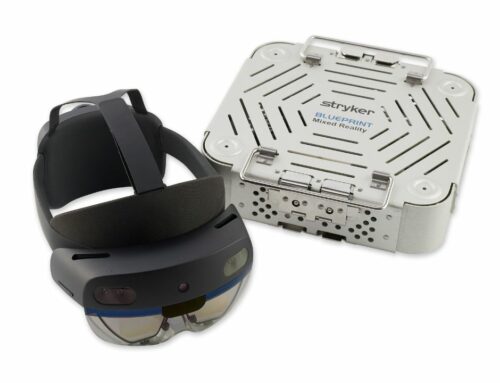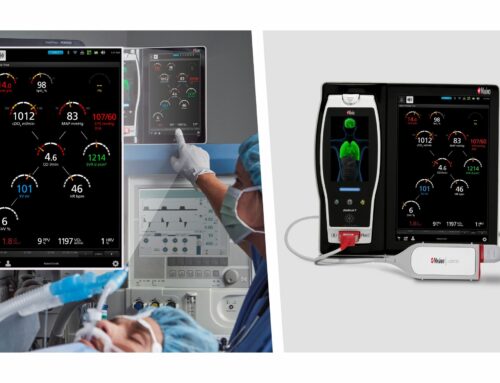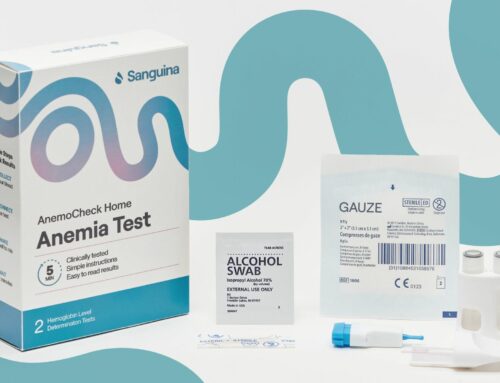By: Jon Gingrich, CEO, Echosens North America |
 A rising number of healthcare professionals have grown alarmed by the rise in liver disease across the nation and around the world. Damage to the liver caused by chronic liver diseases, such as non-alcoholic fatty liver disease (NAFLD) and its more severe form non-alcoholic steatohepatitis (NASH), can lead to advanced fibrosis and liver cancer, liver transplantation, increased risk of cardiovascular events and all-cause mortality. NAFLD is one of the most common causes of liver disease in the United States, with experts estimating that about 24% of U.S. adults have NAFLD and about 1.5% to 6.5% of U.S. adults have NASH.
A rising number of healthcare professionals have grown alarmed by the rise in liver disease across the nation and around the world. Damage to the liver caused by chronic liver diseases, such as non-alcoholic fatty liver disease (NAFLD) and its more severe form non-alcoholic steatohepatitis (NASH), can lead to advanced fibrosis and liver cancer, liver transplantation, increased risk of cardiovascular events and all-cause mortality. NAFLD is one of the most common causes of liver disease in the United States, with experts estimating that about 24% of U.S. adults have NAFLD and about 1.5% to 6.5% of U.S. adults have NASH.
Healthcare professionals should be aware of the impact of Type 2 diabetes and its link to metabolic syndrome (MetS) and NAFLD. MetS is a cluster of risk factors specific for cardiovascular disease, and NAFLD is the accumulation of liver fat in people who drink little or no alcohol. Obesity is the most frequently observed component of MetS.
Fat in the liver can increase the risks of progression of prediabetes to overt disease. Once a patient has fatty liver disease, diabetes may become more difficult to control, making it critical to obtain an early diagnosis and introduce lifestyle changes to halt or reverse NAFLD.
Fatty Liver and Obesity
NAFLD has 70% prevalence among Type 2 diabetes patients, and people living with Type 2 diabetes and NAFLD are at a two-fold risk of all-cause mortality versus those living with Type 2 diabetes alone.
In the United States, 36.5% of adults are obese, while another 32.5% of American adults are overweight. Globally, about 13% of the world’s adult population has obesity and about 39% are overweight, according to the World Health Organization’s most recent statistics.
The good news is that even moderate weight loss can significantly reduce liver fat in patients with NAFLD and play an essential role in the prevention and treatment of Type 2 diabetes. In fact, recent guidelines from the European Association for the Study of the Liver (EASL), a professional association for individuals researching liver disease, points to the effectiveness of non-invasive tests, such as vibration-controlled transient elastography (VCTE) technology.
Vibration-Controlled Transient Elastography
EASL guidelines represent a significant advance for the non-invasive management of patients with liver diseases and an unprecedented level of recommendation for VCTE, including liver stiffness measurement (LSM) by transient elastography (TE), controlled attenuation parameter (CAP) and spleen stiffness measurement (SSM) as an additional non-invasive test to further improve risk stratification and refine the risk of high-risk varices.
Other studies have shown that detecting and monitoring liver disease using VCTE is a non-invasive and quick way for clinicians to quantify the stiffness of liver tissue and estimate liver fat at the point of care.
For example, FibroScan, a VCTE tool that quickly and painlessly quantifies liver stiffness at the point of care, combines standardization, clinical performance and accessibility for early patient identification, in first-line after Fib-4, either in primary care, diabetology clinic or liver clinic, and for advanced liver disease patient management, portal hypertension and hepatocellular carcinoma (HCC) risk stratification.
Cost Savings on the Horizon
Recently, researchers constructed an economic model to determine the potential return on investment (ROI) from deploying a VCTE/CAP–based care model to identify people with FLD in both Medicare and commercial payer settings. Outcomes were evaluated across multiple dimensions and scenarios to estimate up to $2.64 per member per month (PMPM) net savings over five years. A high device penetration level scenario produces an estimated 5-year cumulative gross savings of $10.1 million and a net savings (subtracting device rental) of $8.8 million. This corresponds to a 5-year 6.5:1 ROI and a net savings of $1.46 PMPM. The commercial scenario outcomes range from $11.4 million net savings ($1.91 PMPM, 2.2:1 ROI) over five years to $0.3 million net savings ($0.83 PMPM, 1.6:1 ROI) over three years.
VCTE exams at the point of care are positioned to play a major role in determining liver health. Combined with chronic care management strategies to address NAFLD, this approach offers a drug-free and highly effective way to halt or reverse liver damage. Experts anticipate that these tools will also play a key role in the detection and ongoing assessment of liver health to prompt the use of medications that are currently being developed to battle the national and global liver disease epidemic.
 About The Author
About The Author
Jon Gingrich has more than 20 years of global medical device and health care sales, marketing and general management experience at AxoGen, Inc., Hologic, Inc., Boston Scientific Corporation and Unilever, N.V, Gingrich now leads the development and execution of the Echosens U.S. strategy for expanding the utilization of FibroScan® technology in the assessment of chronic liver disease. As a member of the broader global executive leadership team, he works to implement the Company’s transformation plan and shape the future of Echosens.












